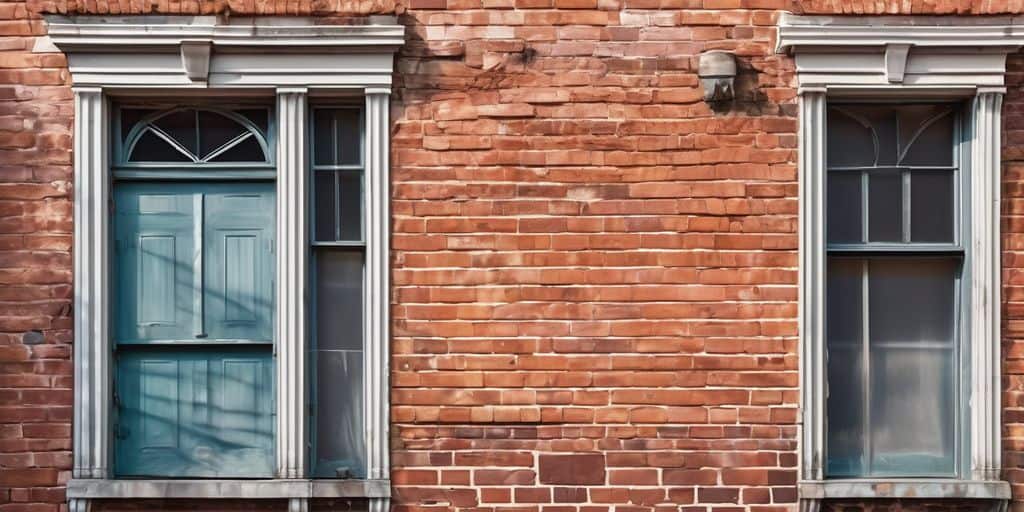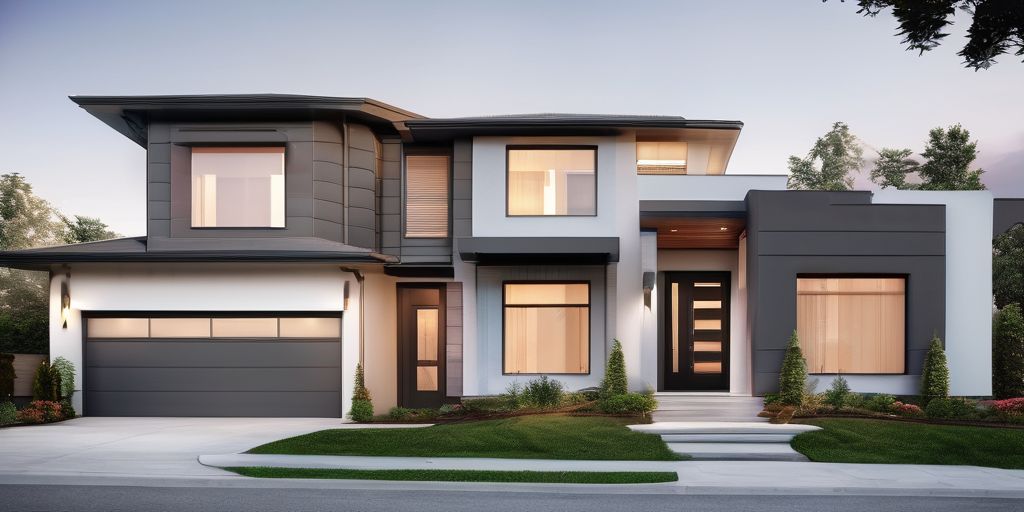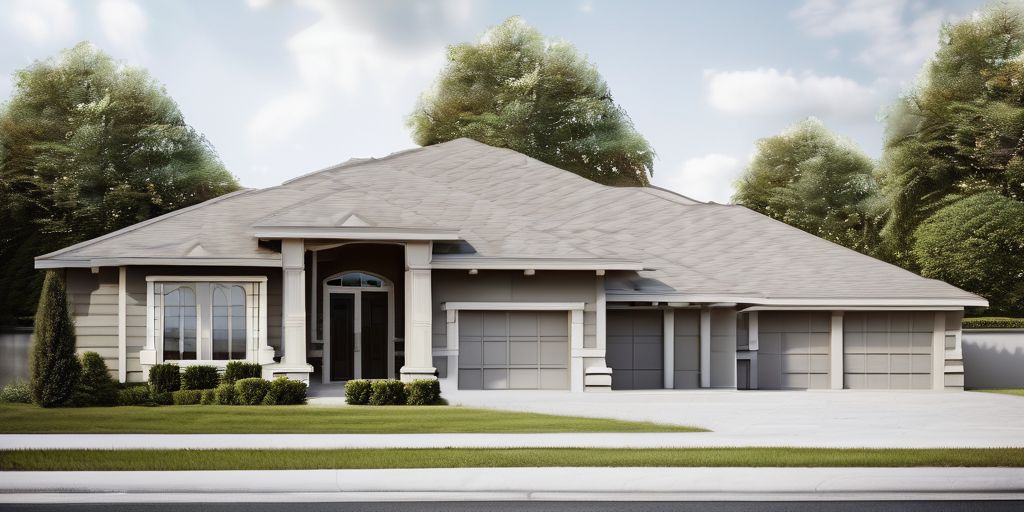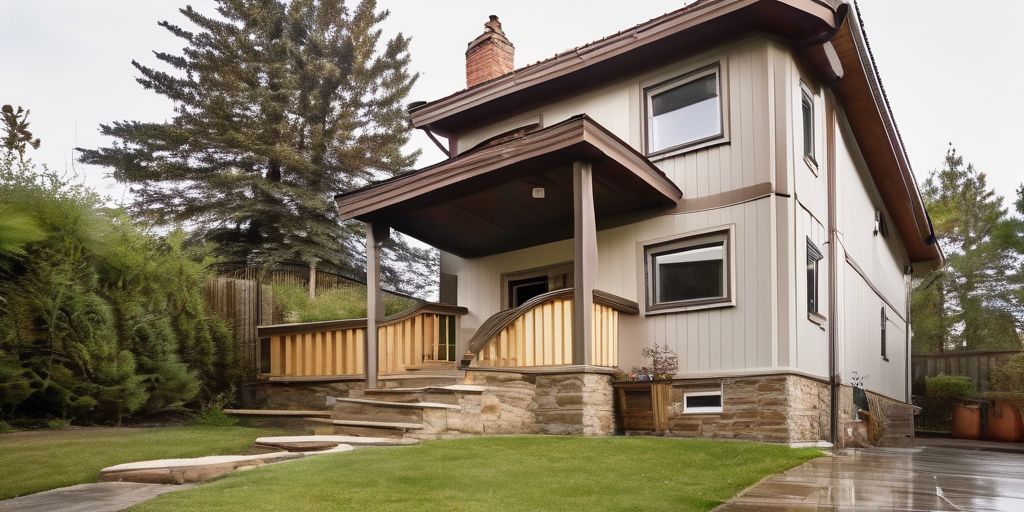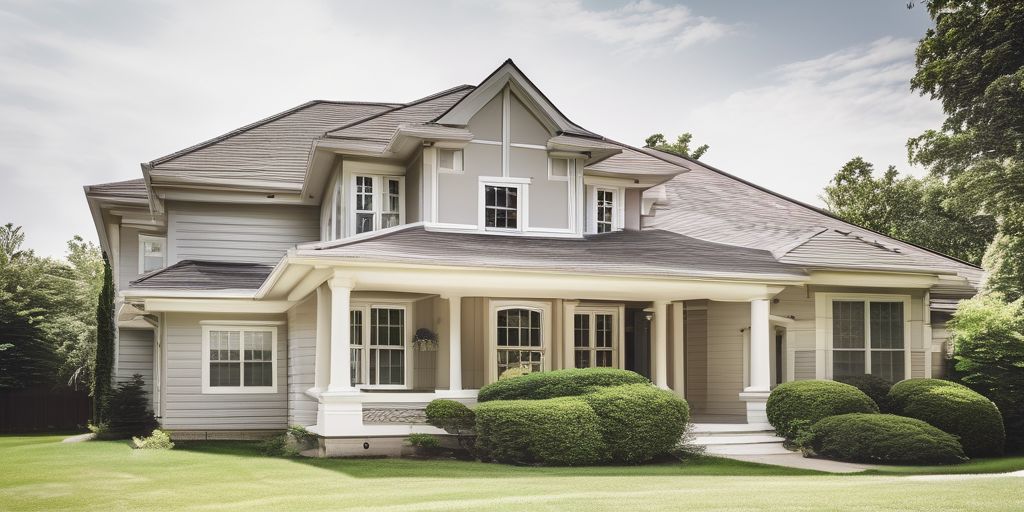Hamilton’s brick buildings are a treasure trove of history and architecture. These structures tell the story of the city’s past and showcase various architectural styles. However, preserving these brick buildings is a challenging task, especially when it comes to painting them without damaging the original material. This article explores the importance of Hamilton’s brick heritage and offers sensitive painting methods to help conserve these historic structures.
Key Takeaways
- Hamilton’s brick buildings are historically and architecturally significant, reflecting the city’s rich past.
- Preserving brick buildings involves addressing common issues like deterioration and weather impact, while balancing modern needs.
- Choosing the right paint and applying it carefully are crucial for maintaining the integrity of brick structures.
- Expert insights and successful case studies provide valuable guidance for sensitive brick restoration projects.
- Community involvement and sustainable practices play a vital role in the long-term conservation of Hamilton’s brick heritage.
Understanding Hamilton’s Brick Heritage
Hamilton’s brick heritage is a rich tapestry woven through its history, architecture, and notable structures. This section delves into the historical significance, architectural styles, and some of the most remarkable brick buildings in the city.
Historical Significance of Brick Buildings
Brick buildings in Hamilton are more than just structures; they are testaments to the city’s past. These buildings have stood the test of time, showcasing the evolution of construction techniques and materials. The use of brick became prominent in the 19th century, reflecting the city’s growth and industrialization.
- Economic Growth: The rise of brick buildings coincided with Hamilton’s economic boom, providing durable and fire-resistant structures for businesses and homes.
- Cultural Identity: Brick buildings contribute to the city’s unique character and charm, making Hamilton a distinctive place to live and visit.
- Preservation Efforts: Maintaining these buildings helps preserve the historical narrative and architectural integrity of the city.
Architectural Styles Featuring Brick
Hamilton boasts a variety of architectural styles that prominently feature brick. These styles not only highlight the versatility of brick as a building material but also reflect the aesthetic preferences of different eras.
- Victorian: Known for its ornate details and decorative brickwork, Victorian architecture is a significant part of Hamilton’s landscape.
- Edwardian: This style features simpler lines and less ornamentation, focusing on the strength and durability of brick.
- Modern: Contemporary designs often incorporate brick to blend historical elements with modern aesthetics.
Notable Brick Structures in Hamilton
Hamilton is home to several notable brick structures that are landmarks in their own right. These buildings are not only architecturally significant but also hold cultural and historical importance.
- Dundurn Castle: A prime example of neoclassical architecture, this historic mansion showcases the elegance and durability of brick.
- The Lister Block: This iconic building in downtown Hamilton is a testament to early 20th-century commercial architecture.
- St. Paul’s Presbyterian Church: Known for its stunning brickwork and Gothic Revival style, this church is a key part of Hamilton’s architectural heritage.
Understanding Hamilton’s brick heritage is essential for appreciating the city’s unique architectural landscape and cultural history. By preserving these structures, we honor the past while paving the way for a sustainable future.
Challenges in Preserving Brick Buildings
Common Issues with Brick Deterioration
Brick buildings, while durable, face several common issues over time. These include:
- Moisture damage: Water can seep into bricks, causing them to crack and crumble.
- Efflorescence: This is the white, powdery substance that appears on brick surfaces due to salt deposits.
- Spalling: When bricks flake or peel away, often due to freeze-thaw cycles.
- Biological growth: Moss, algae, and lichen can grow on bricks, leading to further deterioration.
Regular inspections and maintenance are crucial to address these issues early and prevent extensive damage.
Impact of Weather on Brick Structures
Weather plays a significant role in the wear and tear of brick buildings. Key factors include:
- Freeze-thaw cycles: Water enters the brick, freezes, and expands, causing the brick to crack.
- Rain and humidity: Prolonged exposure to moisture can weaken the brick and mortar.
- Sunlight: UV rays can cause bricks to fade and lose their original color.
- Wind: Strong winds can erode the surface of the bricks over time.
In Hamilton, the fluctuating weather conditions make it essential to use appropriate materials and techniques for brick preservation.
Balancing Modern Needs with Historical Integrity
Preserving the historical integrity of brick buildings while meeting modern needs is a delicate balance. Considerations include:
- Updating utilities: Installing modern electrical, plumbing, and HVAC systems without damaging the brickwork.
- Accessibility: Making buildings accessible to all, including adding ramps and elevators, while maintaining historical features.
- Energy efficiency: Improving insulation and windows to meet current standards without altering the building’s appearance.
- Aesthetic changes: Ensuring any updates or additions are in harmony with the original design.
The Sir Aemilius Irving House in Hamilton is an example of a structure where maintaining historical integrity is paramount. Community involvement and adherence to conservation principles are vital in achieving this balance.
Sensitive Painting Methods for Brick Conservation
Choosing the Right Paint for Brick
Selecting the appropriate paint for brick surfaces is crucial. Milk paint and linseed paint are popular choices due to their durability and eco-friendliness. These paints penetrate the brick, becoming part of the finish, which helps in preserving the brick’s integrity. When choosing paint, consider the following:
- Breathability: Ensure the paint allows moisture to escape to prevent damage.
- Durability: Opt for paints that can withstand weather conditions.
- Historical Accuracy: Choose colors and types that match the original look of the building.
Techniques for Applying Paint to Brick Surfaces
Applying paint to brick requires careful preparation and technique. Here are some steps to follow:
- Clean the Surface: Remove dirt, grime, and old paint using a gentle method like a soft brush or low-pressure washing.
- Repair Damages: Fix any cracks or damaged areas with appropriate materials.
- Prime the Brick: Use a primer suitable for brick to ensure better adhesion of the paint.
- Apply Paint Evenly: Use a brush or roller to apply the paint in thin, even layers. Multiple coats may be necessary.
- Seal the Paint: Consider using a sealant to protect the paint and brick from weathering.
Case Studies of Successful Brick Painting Projects
While specific case studies are not mentioned, it’s important to note that many successful projects have utilized these methods. For instance, in Hamilton, several historical buildings have been preserved using these sensitive painting techniques. The key to success lies in understanding the unique needs of each structure and tailoring the approach accordingly.
Properly painted brick not only enhances the aesthetic appeal but also extends the life of the building.
By following these guidelines, homeowners and exterior painters can ensure that their brick buildings remain beautiful and well-preserved for years to come.
Expert Insights on Brick Restoration
Interviews with Local Restoration Experts
Talking to local experts can give you a lot of useful information about brick restoration. These professionals often have years of experience and can offer tips on everything from choosing the right materials to applying the best techniques. Their areas of specialization include masonry, cladding, and historical restoration.
Best Practices from Experienced Conservators
Experienced conservators recommend several best practices for brick restoration:
- Always start with a thorough inspection of the brickwork.
- Use high-quality, climate-appropriate materials to ensure durability.
- Follow proper surface preparation steps to avoid future issues.
- Regular maintenance is key to preserving the historical character of brick structures.
Learning from Past Restoration Projects
Past projects can offer valuable lessons. For example, the restoration of Hamilton’s historic buildings has shown the importance of selecting historically accurate colors and materials. This not only maintains the architectural integrity but also enhances the building’s aesthetic appeal.
Proper preparation, expert consultation, and the use of high-quality materials are crucial for successful brick restoration. Regular maintenance ensures the longevity and beauty of brick exteriors.
By following these expert insights, you can help preserve the rich brick heritage of Hamilton and other historic areas.
Community Involvement in Heritage Conservation
Local Initiatives Supporting Brick Heritage
Hamilton has a rich history of community-driven efforts to preserve its brick heritage. These initiatives often focus on:
- Educational workshops to teach residents about the importance of brick conservation.
- Fundraising events to support restoration projects.
- Collaborations with local schools to engage students in heritage activities.
Volunteer Opportunities in Restoration Projects
Volunteering is a great way to get involved in preserving Hamilton’s brick buildings. Opportunities include:
- Assisting with cleaning and minor repairs of brick structures.
- Participating in guided tours to educate the public about the city’s brick heritage.
- Helping with administrative tasks for heritage organizations.
Educational Programs on Historical Preservation
Educational programs play a crucial role in raising awareness about the importance of preserving brick buildings. These programs often cover:
- The historical significance of brick architecture in Hamilton.
- Techniques for maintaining and restoring brick structures.
- The impact of weather and modern needs on brick buildings.
Community involvement is essential for the successful conservation of Hamilton’s brick heritage. By participating in local initiatives, volunteering, and attending educational programs, residents can help ensure that these historical structures are preserved for future generations.
Hamilton’s community efforts not only protect the city’s architectural charm but also foster a sense of pride and connection among its residents.
Sustainable Practices in Brick Conservation
Eco-Friendly Materials for Brick Restoration
Using eco-friendly materials is essential for sustainable brick restoration. These materials not only help in preserving the environment but also ensure the longevity of the brick structures. Some popular eco-friendly materials include:
- Lime mortar: A traditional material that is breathable and flexible.
- Recycled bricks: Using bricks from demolished buildings reduces waste.
- Natural paints: These paints are free from harmful chemicals and are safe for the environment.
Long-Term Benefits of Sustainable Conservation
Sustainable conservation practices offer numerous long-term benefits. Preserving historical buildings using sustainable methods can lead to:
- Reduced maintenance costs: Eco-friendly materials often require less upkeep.
- Enhanced durability: Sustainable methods can extend the life of brick structures.
- Environmental protection: Reducing waste and using natural materials helps protect the environment.
Innovative Approaches to Reduce Environmental Impact
Innovative approaches are being developed to minimize the environmental impact of brick conservation. Some of these approaches include:
- Energy-efficient techniques: Using methods that consume less energy during restoration.
- Water conservation: Implementing practices that reduce water usage in the restoration process.
- Waste reduction: Recycling and reusing materials to minimize waste.
By adopting sustainable practices, we can ensure that Hamilton’s brick heritage remains intact for future generations.
In conclusion, sustainable practices in brick conservation not only help in preserving the historical integrity of buildings but also contribute to environmental protection. By using eco-friendly materials, focusing on long-term benefits, and adopting innovative approaches, we can achieve a balance between conservation and sustainability.
Resources for Homeowners and Builders
Finding Qualified Restoration Professionals
When it comes to preserving the historical integrity of brick buildings, finding the right professionals is crucial. Here are some tips to help you:
- Research: Look for professionals with experience in historical restoration.
- Ask for References: Speak to previous clients to understand their experience.
- Check Credentials: Ensure they have the necessary certifications and training.
- Visit Past Projects: If possible, visit some of their completed projects to see their work firsthand.
Grants and Funding for Heritage Conservation
Securing funding for heritage conservation can be challenging, but there are several grants and funding options available:
- Local Government Grants: Many local governments offer grants for heritage conservation projects.
- Non-Profit Organizations: Some non-profits provide funding for preserving historical buildings.
- Tax Incentives: Look into tax incentives for heritage property owners.
- Community Fundraising: Engage the community in fundraising efforts to support conservation projects.
Workshops and Training Programs for DIY Enthusiasts
For those who prefer a hands-on approach, there are various workshops and training programs available:
- Local Workshops: Many communities offer workshops on brick restoration techniques.
- Online Courses: There are numerous online courses that cover the basics of brick conservation.
- Hands-On Training: Some organizations provide hands-on training sessions for DIY enthusiasts.
- Educational Programs: Look for educational programs that focus on historical preservation.
Engaging in these resources not only helps in preserving the beauty of your brick building but also ensures that the historical significance of structures like the Dundurn Castle in Hamilton is maintained for future generations.
Conclusion
Preserving Hamilton’s brick heritage through thoughtful painting methods is more than just a task—it’s a commitment to honoring the past while embracing the future. By using techniques that respect the original materials and craftsmanship, we can ensure these historic buildings continue to tell their stories for generations to come. Whether it’s through the use of traditional milk paint or careful restoration practices, every effort counts. Let’s continue to cherish and protect our architectural treasures, making sure they stand proud and beautiful for years to come.
Frequently Asked Questions
Why is preserving Hamilton’s brick heritage important?
Preserving Hamilton’s brick heritage is important because it helps maintain the city’s historical character and architectural beauty. These buildings tell the story of Hamilton’s past and contribute to its unique identity.
What are common problems with old brick buildings?
Old brick buildings often face issues like cracking, crumbling, and water damage. Weather and time can cause bricks to deteriorate, making maintenance and restoration necessary to keep them in good condition.
How can paint help in conserving brick buildings?
Using the right kind of paint can protect brick surfaces from weather damage and extend their lifespan. Special paints designed for bricks can prevent moisture from seeping in while allowing the bricks to breathe.
What should I consider when choosing paint for brick surfaces?
When choosing paint for brick surfaces, it’s important to select a breathable paint that won’t trap moisture inside the bricks. Look for paints specifically made for masonry and consider eco-friendly options.
Can I paint my brick house myself, or should I hire a professional?
While painting a brick house can be a DIY project, hiring a professional is often recommended. Professionals have the expertise and tools to ensure the job is done correctly and that the paint will last.
Are there any local resources for learning about brick restoration?
Yes, there are local resources such as workshops, training programs, and experienced professionals in Hamilton who can provide guidance on brick restoration. Community initiatives and heritage conservation groups are also great places to start.

